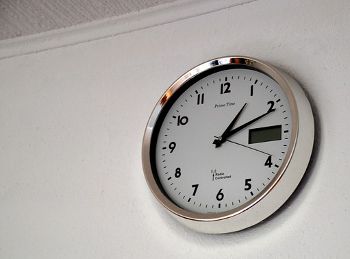In, on and at | Prepositions of place
A preposition of place is a word which helps to describe where something or somebody is. A preposition of place describes the location of something.
There are many prepositions of place in the English language and each of them has several uses.
In this lesson, we will study 3 prepositions of place:
- at
- in
- on
Nội Dung Chính
at
Specific point or place
We can use “at” to describe a very specific point or place. Examples:
There is a dog at the top of the steps.

There is a woman at the bottom of the steps.
The postman is at the door.
There is a supermarket at the end of the street.
An exact address
An exact address is an address with the name of the street and also the number of the street. Example:
Mark lives at 55 Oxford Street.
If we do not know the exact address. If we only know the name of the street, then we use “on” as the preposition:
Mark lives on Oxford Street.
Events
We use the preposition “at” to describe being present at an event. Examples:
I was at a party last night.
Where is David?
He is at a concert.

Buildings where an event or activity takes place
We use “at” if somebody has gone to a building, and we want to describe generally and roughly where the person is. When we use “at” in this context it is not important if the person is currently inside the building or outside the building. We are simply describing where the person has gone. It is not specific. Examples:
Mark: Hello David. Is Jane here?
David: Jane isn’t here. She’s at the library with her friends.

David is saying that Jane has gone to the library. It is a general statement of where Jane is. Maybe Jane is inside the library building or maybe she is outside the library building waiting. He doesn’t know and it isn’t important.
If we want to be very specific about a building, then we use the preposition of place “in” to say that the person has entered the building. Example:
(Mark goes to the library to look for Jane. He sees a friend of Jane’s called Sarah in front of the library .)
Mark: Hello Sarah. Have you seen Jane? Where is she?
Sarah: Hi Mark. Yes, she is in the library.
Conclusion, for buildings, we use “at” for a general description of where somebody has gone and we use “in” to specifically say the person is inside the building.
A stop on a journey
We stopped at a small village.
The train from Manchester to London stops at Birmingham.
in
Enclosed space / a large place with boundaries
We use the preposition “in” for an enclosed space or a place which is surrounded by boundaries. Examples:
The dog is in the garden.

I have an apple in my bag.
David’s car is in the car park.
Let’s go for a walk in the forest.
Towns or cities
A very common use of the preposition “in” is for towns and cities. In english, we do NOT use “at” for towns and cities:
I was born in Manchester. ![]()
Jane lives in London. ![]()
Jane lives at London. ![]()
Where is Mark?
He’s in Birmingham today.
on
For a surface
The preposition “on” is often used to describe a surface. Examples:
There’s a clock on the wall.

What’s that on the ceiling?
There’s a bag on the floor.
My books are on the table.
Attached to
If something is physically attached or joined to something else, then we use the preposition “on”. Example:
She is wearing a ring on her finger.
Close to a river
If something is directly next to a river, then we use the preposition “on”:
London is on the River Thames.

My house is on the River Avon.







